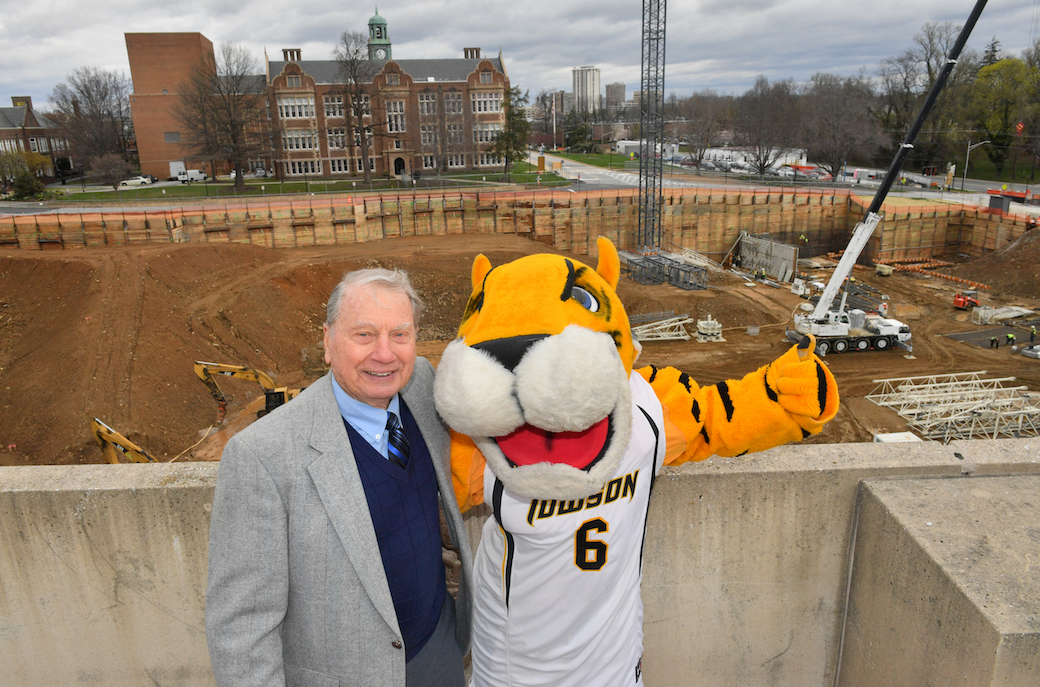A groundbreaking tenure
Howard Erickson, Ph.D., former chair of the Department of Biological Sciences, has seen the construction of two TU science facilities
By Megan Bradshaw on April 17, 2018

In 1959, when Howard Erickson, Ph.D., arrived at Towson State Teachers College (as Towson University was called then), the science department was in the basement of Stephens Hall.
“With squeaky wood floors,” Erickson laughed.
He remembers the TU of the late 1950s as a growing institution—even then—open to broadening its science program beyond pre-professional courses.
“It was a vibrant time,” he said. “[My department] was just starting to develop academic diversity, splitting into the physical and biological sciences.”
About three years after he arrived, the university began planning for expansion. The student population was around 3,500, but the administration saw a boom coming.

Erickson remembers being part of the 15–20 faculty members who designed what became Smith Hall—named after George Latour Smith, a beloved professor of chemistry, physics, natural science and drawing from 1874 until his death in 1892.
They drew up plans and visited regional institutions to gather ideas for lab construction before meeting with architects.
“It was a really exciting time,” he said. “Virtually all of us were novices in anything beyond imagining what [Smith Hall] could be.”
Erickson recalls a relatively smooth process. The biological sciences were located on the first and second floors, the physical sciences inhabited the top two floors, and both departments worked with the architects to develop the facilities.
By 1975 university enrollment had grown to around 13,000, and demands from other departments with science requirements—like nursing and physical education—necessitated an addition to Smith Hall.
“Servicing other departments’ needs beyond biological and physical sciences made it obvious an addition was needed,” said Erickson.
Departmental leaders convened, gained input from around the university and drew up a plan.
“It’s amazing it worked as well as it did,” he continued. “The main thing we learned from the first construction project was to have as much flexibility as possible in room size and design. That way rooms could be used for classes and labs.”
While teaching was heavily emphasized when Erickson arrived at TU, both the original Smith Hall and the expansion included research facilities. As the years passed, research grew more important in the college, eventually outgrowing the building.
While his 10-year tenure as department chair was bookended by construction of science facilities, Erickson could not have foreseen the new science complex being built today.
The 320,000-square foot, state-of-the-art academic and research space will be the largest academic area on TU’s campus—with more than 50 teaching laboratories, 30 research laboratories, and 50 classrooms supporting mentor-based teaching and modern scientific research.
According to Erickson, though, one thing does remain the same over the last 50 years: the people. Then as now, “some really fine people have come to Towson, even when it was small. And look at it now.”
This story is one of several related to President Kim Schatzel's priorities for Towson University: Strategic Plan Alignment.